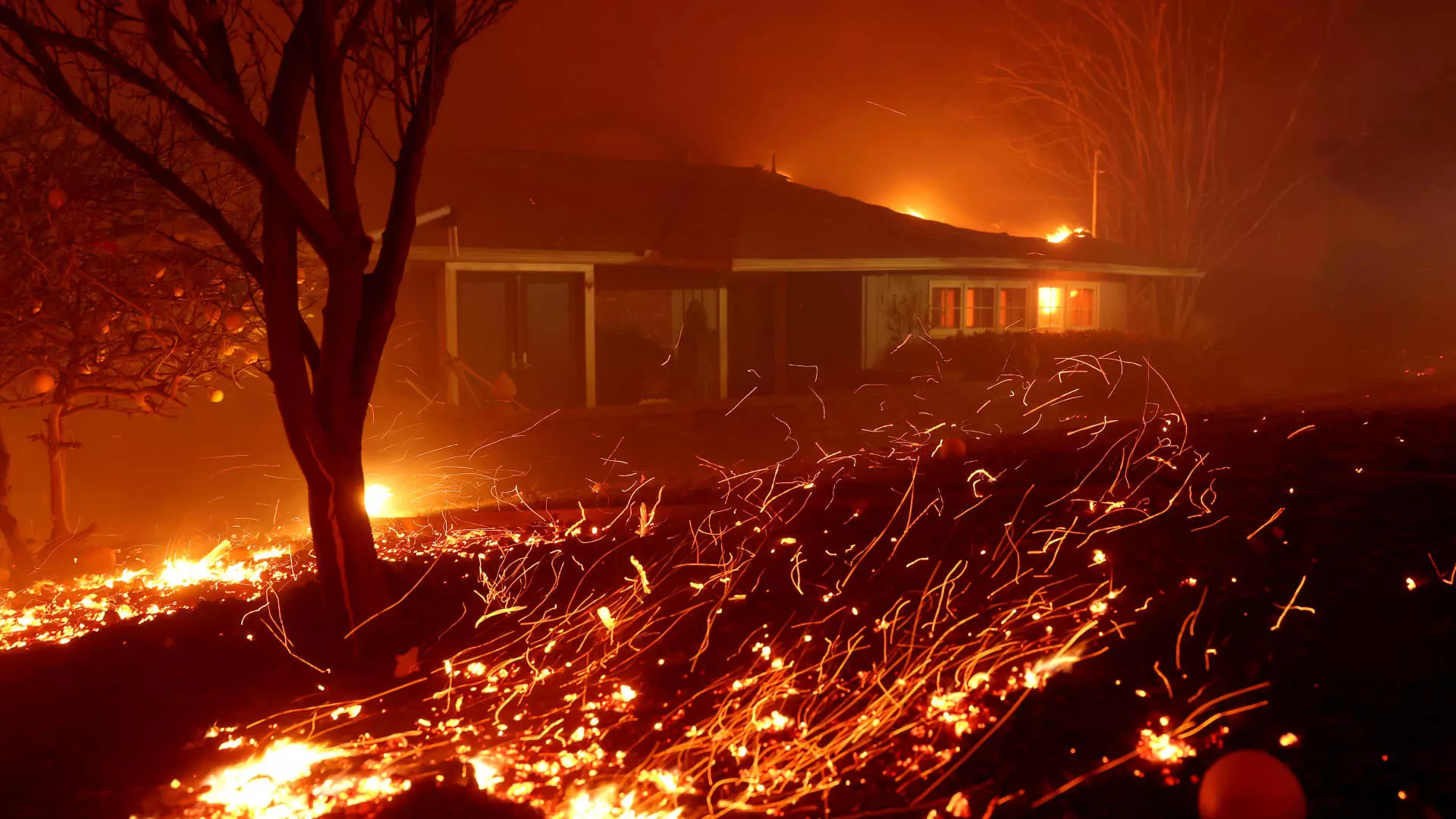The recent wildfires ravaging Los Angeles have ignited widespread concerns, not only due to their immediate physical destruction but also because of their anticipated long-term financial repercussions. As experts begin to piece together the economic fallout, one trend is glaringly evident: the cost of insurance is set to surge significantly. This impending increase will likely reverberate throughout the real estate sector, affecting home values not just in California, but nationwide. The reality is that the losses from natural disasters like these wildfires have already been on the radar of climate risk analysts, who have been diligently calculating the potential destabilizing effects of climate change on property markets.
A study by First Street, a climate-risk analysis firm, forecasts a sobering reality: by the year 2055, 84% of homes across the United States may experience a decline in market value, culminating in a staggering cumulative loss of approximately $1.47 trillion. Jeremy Porter, the head of climate implications research at First Street, accurately encapsulates the situation by stating that “climate change is no longer a theoretical concern—it is a measurable force reshaping real estate markets and regional economies across the United States.”
The Financial Forecast: Rising Insurance Premiums and Their Implications
According to First Street’s analysis, the national average for insurance will likely escalate by 25% over the next three decades. This figure is composed of two crucial factors: a projected 14% due to the previously understated risk of natural disasters and an additional 11% arising from the increasing frequency and severity of climate-related incidents. While this average decline in property values might appear modest at around 3%, the consequences will not be uniformly distributed. Areas particularly vulnerable to climate threats—such as certain counties in Texas, Florida, and Louisiana—could witness home values plummet by as much as 50%.
Dave Burt, the founder of DeltaTerra Capital, is at the forefront of assessing climate risks to real estate investments. His firm specializes in providing tools for institutional investors to mitigate and manage climate-related financial risks. Burt highlights the urgency of the situation, asserting that within five years, at least 20% of U.S. homes will be affected by climate-related declines in value. Reflecting on historical similarities, he draws a parallel between current trends and the housing market failures witnessed during the subprime mortgage crisis.
Despite the warnings from industry experts, the insurance market has been slow to react to these changing dynamics. Burt notes that the insurance industry’s hesitancy to raise premiums in response to the rising tide of weather incidents is rapidly diminishing. The onset of climate threats emphasizes the fragile state of the current insurance system, which is increasingly unable to withstand the pressure of extreme weather events.
Even figures in high-ranking government positions have echoed these concerns. During a Senate hearing, Senator Sheldon Whitehouse raised alarms about the potential for a major economic collapse emanating from the insurance sector. His remarks underline the urgency of the situation as widespread denial persists despite clear signals in the market.
The threat of foreclosures looms large in regions most affected by climate disasters. Historical data illustrates this trend: for instance, following Hurricane Sandy in 2012, foreclosures in affected areas surged by 46%, while similar predictive patterns ensued after the floods in Ames, Iowa, in 2008. The collateral damage inflicted by severe weather events directly translates into economic instability and financial distress for homeowners.
Major mortgage entities such as Fannie Mae are beginning to take notice. Their chief climate officer, Tim Judge, acknowledged that climate risks are not presently accounted for at the level of individual properties during underwriting processes. As the ramifications of climate change become more apparent, it is crucial for mortgage backers to integrate these risks into their assessments, yet progress has been slow.
In this complex landscape, firms like DeltaTerra Capital are developing strategies to help investors navigate an uncertain future. Burt emphasizes the importance of proactive measures, which include avoiding high-risk securities and employing hedging strategies, such as utilizing mortgage credit derivatives. As insurance costs escalate—fuelling declines in home values—the need for resilient communities and strategic financial planning becomes paramount.
Nevertheless, not all responses to climate change have been constructive. Recently, the Trump administration halted the implementation of the Federal Flood Risk Management Standard, which was designed to ensure infrastructure resiliency against future flood events. This decision has sparked widespread criticism, as it essentially sidelines crucial approaches to mitigating the risk of future climate disasters.
As we move forward, the implications of climate change on the real estate market are profound and far-reaching. The intertwining of wildfires, rising insurance costs, and declining home values paints a grim picture for the future of American housing. While the time for remedial action is narrowing, the reality is that homeowners, investors, and policymakers must reckon with the escalating risks of our changing climate. The road ahead requires significant adaptation, foresight, and a commitment to reducing vulnerabilities in the housing market before it’s too late.

